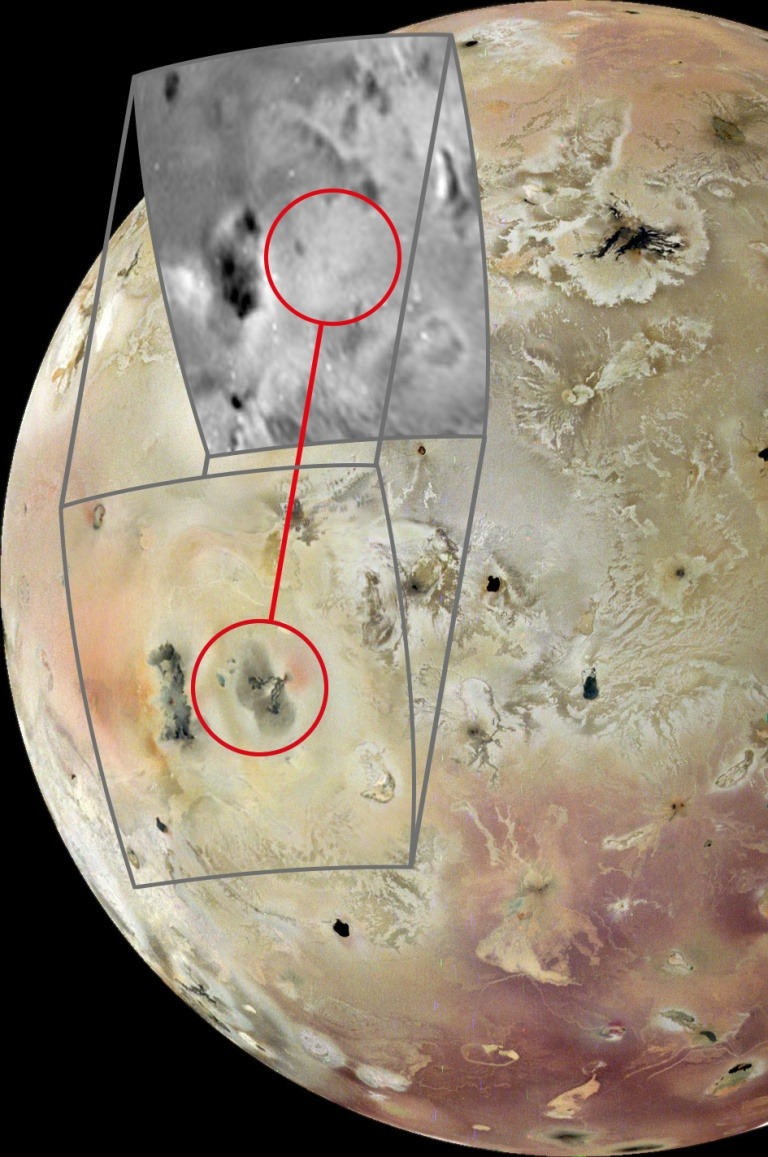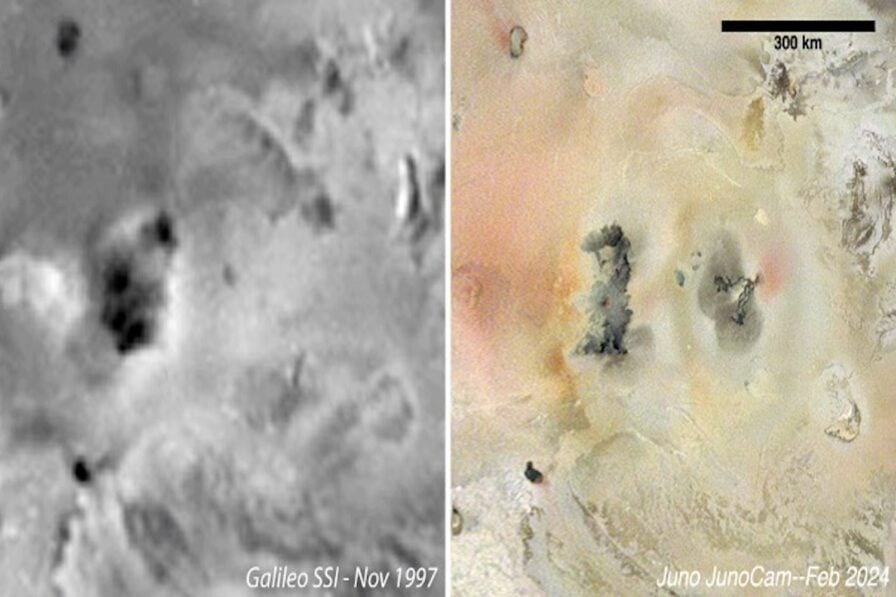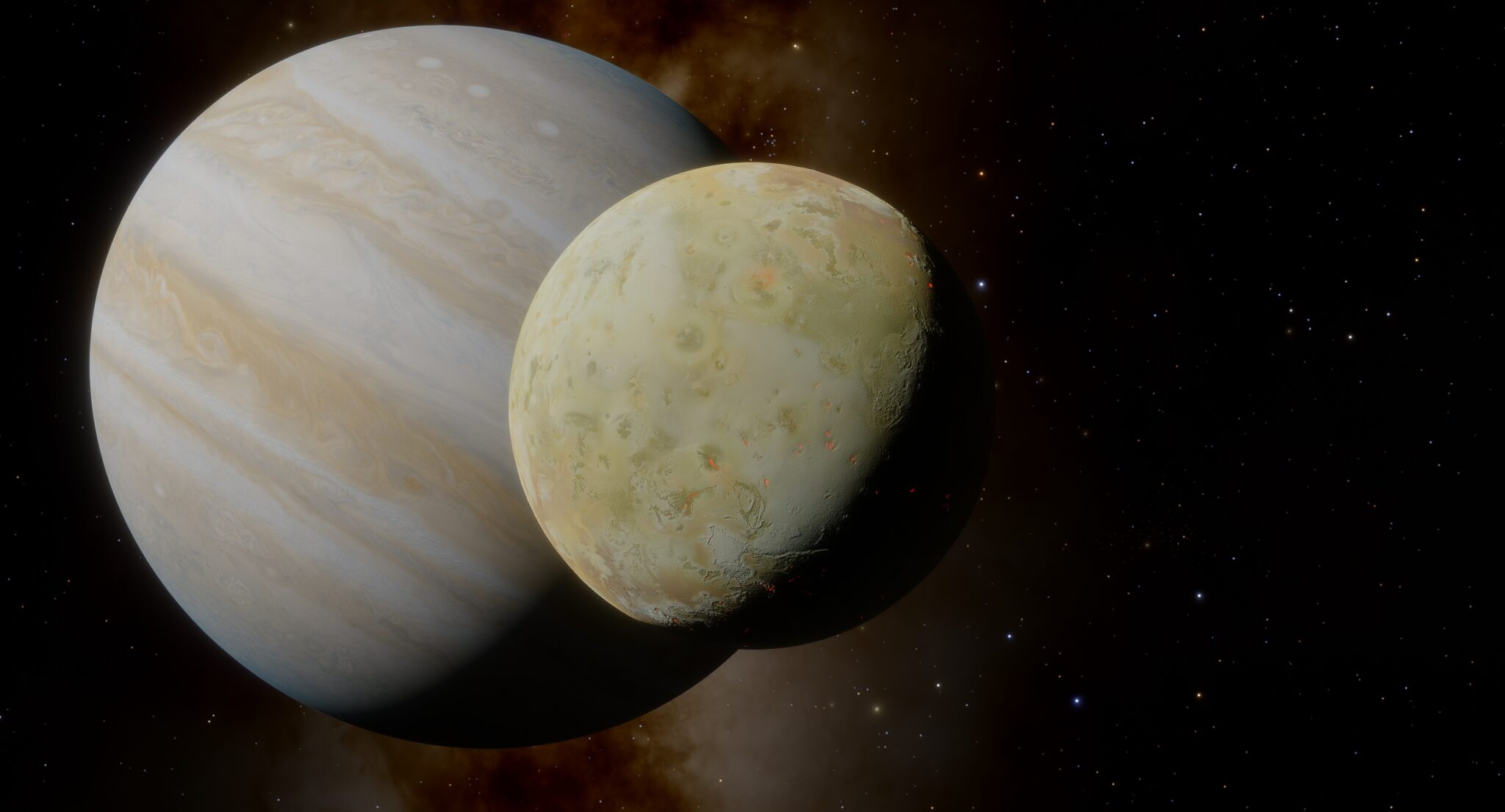New discoveries are always impressive, especially when it comes to Jupiter’s moons. Recently, a new volcano has been discovered on the moon Io, the most volcanic object in the Solar System. Its eruptions covered an area of 285 km2 with lava. This volcano was spotted by NASA’s Juno spacecraft during a flyby in February 2024 at a distance of 2,530 kilometers from the surface of Io.

Images of the volcano were first shown at the Europlanetary Science Congress in Berlin. They were taken by the Junocam camera, which photographs in the visible optical spectrum. In 1997 Galileo images, this region of Io looked deserted, but now a complex volcanic structure has formed here. According to Michael Ravin from Malin Space Science Systems, the volcano has emerged from nothing over the past few decades.

You can see red spots around the volcano, which are sulfur that erupted and settled to the surface, as well as frozen sediments created by the evaporation of substances around two large lava flows, each stretching more than 100 kilometers.
The Juno spacecraft continues to collect new data about Io. During the same flyby, islands and steep mountains inside the lava lake – places resembling fantasy worlds – were spotted.

The Juno mission began in 2011 to explore Jupiter and its moons. Since arriving at the planet in 2016, the spacecraft has been in orbit for 53 days, which makes it possible to explore both the gas giant itself and its moons, Io and Europa. JunoCam images are publicly available, so anyone can analyze and create their own images.
Io is 740 million kilometers away from Earth, and scientists continue to study it. Io’s volcanoes, which number around 400, make it look like the young Earth. The study of this moon is helping scientists better understand the formation of planets and their geologic features, such as mountains.
Earlier we reported on how Juno made a record-breaking flyby past Jupiter’s volcanic moon.
According to sciencealert.com


